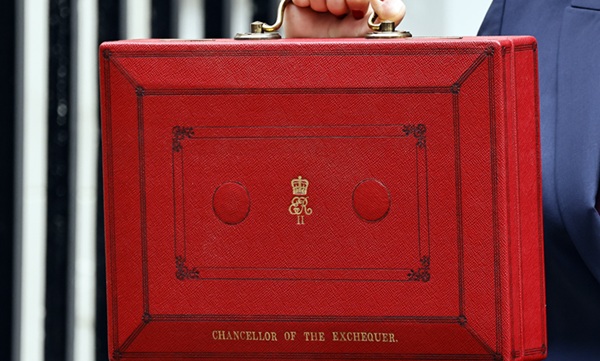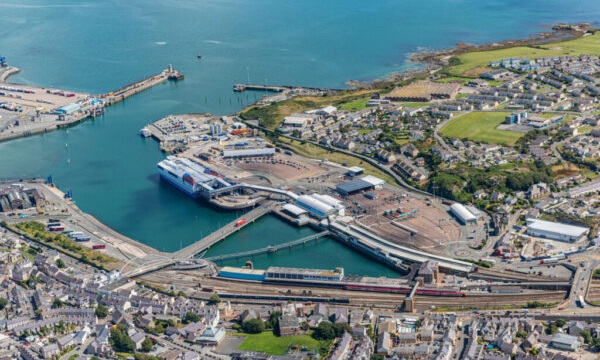
GUEST COLUMN:
Dr Edward Thomas Jones
Senior Lecturer in Economics
Albert Gubay Business School, Bangor University

As borrowing costs rise and growth stalls, the UK must turn to innovation not austerity to rebuild its economy, and Wales must be part of that story.
Tax, borrowing, and the cost of stability
Every government funds its public services in two ways: through the taxes it collects and the money it borrows. When spending consistently exceeds revenue, governments issue debt to cover the difference and must pay interest on it. In times of economic stability, this balance is manageable, but when growth stalls and borrowing costs rise, even small shifts in revenue or interest rates can reshape the entire fiscal landscape. The latest figures from the Office for National Statistics show just how tight that balance has become. Between April and September, the UK borrowed almost £100 billion, the highest six-month total since the pandemic and £7 billion more than forecast by the Office for Budget Responsibility.
The UK’s public sector net debt-to-GDP ratio stood at just over 95 per cent at the end of September 2025. Crossing the 100 per cent mark is not necessarily fatal, but what matters is whether GDP grows faster than debt over time. A government can manage a large debt burden if the economy expands, and interest rates remain low. Unfortunately, Rachel Reeves faces the opposite: weak growth and high borrowing costs. Without a credible plan to change that dynamic, budgets like the one due on 26 November will continue to be a fiscal nightmare.
The hardest lever to pull
The Labour Party’s 2024 manifesto promised not to raise taxes on “working people”, yet the government’s own fiscal watchdog now estimates a funding gap of up to £30 billion. At some point, something must give. The familiar rhetoric about efficiency savings or closing loopholes will only go so far. Strip away the political theatre, and one brutal truth remains: the quickest and most effective way to restore stability is to raise the basic rate of income tax. That prospect makes politicians squirm. It is the most visible of fiscal levers, the one every government dread pulling. But the arithmetic is undeniable. Britain leans heavily on a handful of major taxes, with income tax doing most of the work. Tweaking smaller levies will not come close to filling the hole. By contrast, a modest rise in the basic rate delivers scale and certainty: it raises serious revenue, is simple to administer, and reshapes the fiscal picture almost overnight.
The problem, of course, is fairness. A rise in the basic rate falls hardest on low- and middle-income households. For families already stretched, it means less disposable income, weaker consumption, and more political anger directed squarely at the Chancellor. On the Treasury’s balance sheet, it looks elegant; in the real economy, it risks being clumsy and regressive.
With borrowing already close to £100 billion in the first half of the fiscal year and long-term debt costs at their highest level in nearly three decades, the room for manoeuvre is shrinking fast. On Tuesday (4 November), the Chancellor delivered an early morning speech setting the stage for difficult tax decisions. Rachel Reeves stressed everyone would need to play their part and that her Budget at the end of the month would focus on growth and fairness. The message was clear: tax rises are coming, and the public should prepare themselves.
Reigniting growth through innovation
Yet the bigger challenge facing Reeves is not only to balance the books but to reignite growth after years of lost momentum. The Office for Budget Responsibility is expected to downgrade Britain’s productivity outlook once again. Investment remains subdued, and too many of the country’s most promising young firms are bought out before they can scale. To change that, Reeves will need to outline a Budget that drives innovation, supports start-ups, and builds the conditions for long-term growth.
The UK already forms the heart of what investors call the “New Palo Alto”, a cluster of European cities within a five-hour train ride of London that could become a start-up factory to rival Silicon Valley. It includes cities with deep industrial heritage such as Glasgow, Eindhoven, and Manchester, alongside world-renowned centres of culture, policy, and academia such as Amsterdam, Cambridge, Edinburgh, London, Oxford, and Paris. They are home to companies like low-cost computer maker Raspberry Pi, whose technology was invented and developed in Cambridge, manufactured in Pencoed, South Wales, and sold worldwide.
For Wales, the challenge is to ensure this new era of innovation-led growth does not stop at the Oxford-Cambridge corridor. Wales has already shown it can be part of the “New Palo Alto” and has the foundations to compete. But it invests a significantly smaller share of its economy in Research and Development (R&D) compared with the UK average. High R&D spending is necessary but not sufficient for innovation-led growth. R&D budgets must be combined with strong commercial ecosystems that convert inputs into measurable outputs through deep networks and scale-up capital. To ensure Wales can take part in, and benefit from, any innovation-led growth, there must be a political focus on connecting research excellence with enterprise, ensuring that Welsh ideas and innovations can grow, scale, and succeed.












